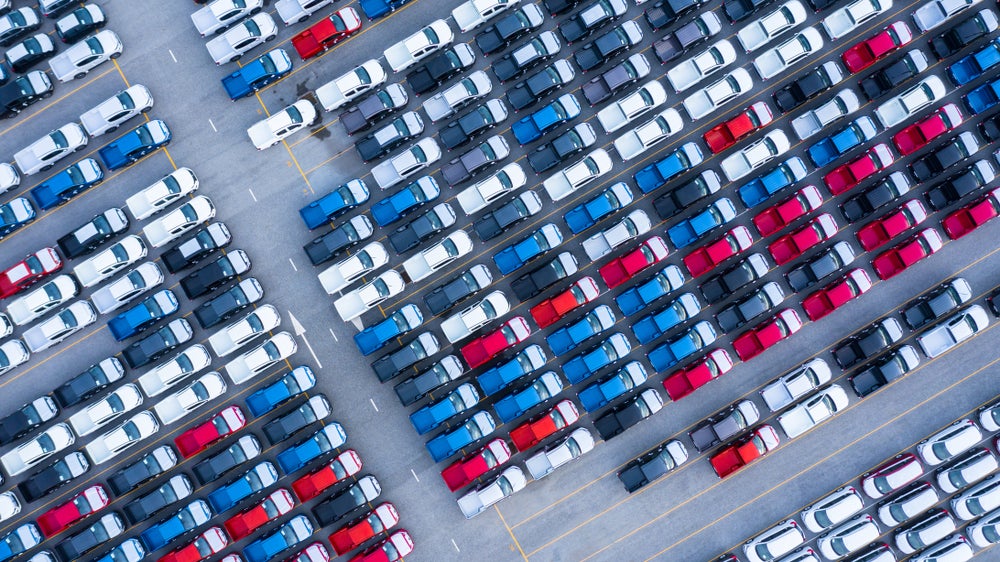
In the wake of the Covid-19 pandemic the sub-prime market is set to be forever changed but remains a vital part of the auto finance sector.
For many, the outset of 2020 was a relatively optimistic time. The UK had just come through an election, the uncertainty of Brexit seemed to be finally reaching some sort of conclusion, and consumer confidence was on the rise.
“We were having a really busy time, with record months in January and February, so things were going pretty well really,” says Oliver Mackaness, director of Billing Finance. “I think people were feeling confident after Christmas and optimistic about the world.”
“Clients in the sub-prime sector were reporting a good solid start to 2020, good levels of new business and arrears in line with forecasts,” Mel Chell, a partner and head of asset finance at Shoosmiths tells us. “They were performing well and in line with all other elements of the motor finance market which was very buoyant.”
“Sub-prime was strong throughout 2019 and the start of 2020 was stable although not showing growth year-on-year, it was looking likely to be a year on par with 2019 for us,” agrees Simon Bayley, director of sales & marketing at Moneybarn.
But this would not remain the case, as Mackaness recalls: “Then Covid came along and changed everything.”
How well do you really know your competitors?
Access the most comprehensive Company Profiles on the market, powered by GlobalData. Save hours of research. Gain competitive edge.

Thank you!
Your download email will arrive shortly
Not ready to buy yet? Download a free sample
We are confident about the unique quality of our Company Profiles. However, we want you to make the most beneficial decision for your business, so we offer a free sample that you can download by submitting the below form
By GlobalDataCovid-19 Comes to Sub-Prime
There’s no denying that sub-prime joined most sectors of the car finance sector in being hard hit by the pandemic.
“We went from lending over £3mn to just over £1mn and in a way, I was surprised we did that much,” Mackaness admits. “We stopped lending to self-employed people, stopped lending for leisure vehicles, changed our affordability buffer and battened down the hatches quite a lot, but we still wanted to remain lending some money out. On the collections side, we had to deal with deferrals, FDA requirements.”
“Covid has had a significant impact, but in different ways, clearly our customer base are impacted the same as any other with lockdown and furlough schemes, and the risk of job losses is arguably higher in this segment with a high degree of blue-collar workers,” Bayley agrees.
The sector has continued to move forward though, overcoming the challenges the pandemic has put in its path and even finding opportunities.
“We’ve carried on lending, carried on collecting and just slowly over time every month is slightly busier. In July we were lending two thirds to three quarters of what we previously lent,” Mackaness says. “Our main issue is that our operations are quite manual and since May and June the number of propositions we’ve been receiving has shot up because some of our competitors have stopped lending. So that’s meant more proposals for us.”
“Due to the recommendation to not use public transport, this has created a new need for vehicles for initially key workers but now all workers that historically used public transport and do not feel they want to, moving forward,” Bayley tells us. “Due to this not being a planned purchase, this has created a new market for finance providers and has subsequently seen a growth of which we have seen in the sub-prime sector.”
“It hasn’t had a negative impact other than the volumes of customers requesting a payment deferral,” Chell says. “In terms of new business levels, they have bounced back it seems with many people reluctant to now car share or use public transport for safety reasons, they are looking for their own private transport more than ever before.”
The sad truth is that the pandemic has made financial circumstances more difficult for people at almost every stratum of society, which means the sub-prime market has new opportunities, but also responsibilities.
“The unfortunate reality of this pandemic is it causes financial hardship and as such, some historic prime or near-prime customers fall into the sub-prime sector. This does create additional opportunities for sub-prime lenders to be able to support this customer base that needs help now and will most likely move back up into a prime proposition for their next vehicle in a few years’ time,” says Bayley.
“The impact of furloughs and job security has been felt more in the sub-prime markets where customers are less able to withstand income shocks,” Chell acknowledges. “If a sub-prime customer has a reduced income on furlough it is likely they will struggle to maintain payments and if they lose their job, then it is unlikely they will have savings or access to credit to enable them to withstand this period of financial uncertainty.”
These challenges have created demand, which has been a challenge in itself for smaller firms.
“In February we receive 23,000 proposals, April 20,000, in July 29,000 and August 25,000. We just couldn’t cope with the number of proposals being sent through,” Mackaness recalls. “So how we responded is we have a minimum credit score we decline deals at, and we had to increase our minimum cut off purely as a proposal reduction method. So sub-prime lenders moved northwards in that we were lending money to customers who would previously be considered prime. Our average credit score in August was 8% higher than who we lent to in March. We’ve been lending to better quality people, and our typical mainstay of customer we’ve not been underwriting them because we lack the capacity to look at those deals.”
Beyond sheer volume, lenders have also had to address the way they interact with customers.
“I think this has been different operationally. Due to our business model, we are set-up for a significant amount of customer contact throughout the life of an agreement and as such have a large contact centre and a variety of forbearance options available to our agents,” says Bayley. “Although as with all lenders we have seen extreme levels of customer contact and payment holiday requests, we have been able to do this alongside keeping the new business operations open. This has meant that we have been able to support new customers throughout this period although with additional checks in place. In the first months since the start of lockdown over 30% of our new customers were key workers, so we feel it was the right decision to make to be able to support in some small way this sector at such a key time.”
Still, as Chell points out, the sector is starting to show strain: “There’s less financial resilience. More requirement for full payment deferrals as any change in circumstances are immediately felt in this sector and certainly less acutely than in prime motor finance. That said, I think all sectors of motor finance have seen some customers using additional cash from credit deferrals on their consumer cards and loans (fewer customers in this sector have a mortgage) to clear arrears and stay in possession of the vehicle.”
The Post-Covid Customer
The underlying common thread is that changes among sub-prime customers are just as important right now as changes in the business itself.
“A lot of people are window shopping at the moment. As well as the fact that companies aren’t lending, we’ve also found that conversion rates are much lower, people aren’t committing to a deal,” Mackaness says.
“It is the case when there is financial turmoil that the sub-prime sector grows as borrowers have less affordability or have had events that have meant a significant change in their circumstances,” Bayley adds.
We may have only seen the tip of the iceberg of this effect so far.
“There is an expectation that more customers will now move into this sector and less will be considered ‘Prime’,” Chell says. “However, with furlough and other government schemes assisting the economic situation, we haven’t really seen this yet.”
Understanding what that post-furlough market could look like is the sub-prime market’s next big task.
“The key challenge is the end of the furlough scheme and finding out the reality of peoples employment situation. Then making sure we are able to underwrite the case based on facts, by which I mean having the right and accurate data around payment holidays available through the CRA’s that we are underwriting with open eyes,” Bayley argues. “A lot of work has been put in to deliver this, but how extended payment holidays are being recorded could cause some confusion.”
“In collections, we’ll need to be more flexible and more patient going forward,” says Mackaness. “I don’t really want deferrals becoming mainstream collection tools but we are going to have to offer customers more solutions and be a bit more patient with them, listen to what their affordability needs are.”
Chell agrees: “Challenges will include assessing creditworthiness for future lending in an accurate and fair manner considering the impact of the changes to CRA reporting during the pandemic.”
While the challenges are many, there are opportunities to be had too.
“We have a new sector of customers that do not want to use public transport, we also have an influx of customers that due to financial performance during the pandemic have moved into sub-prime even if only for a short period,” Bayley says.
“Opportunities include attracting new customers who were previously Prime but may have moved into the sub-prime sector due to Covid related financial issues. There are also more customers considering used cars rather than new cars which will see demand increase,” Chell adds.
The lockdown has also brought with it a chance for lenders reassess and improve the way they work.
“Doing a slower month we had more opportunities to work on new developments in the business that will be fruitful early next year. We’ve definitely become a much more flexible workplace, with 50% of our staff working from home and 50% in the office. I think that’s a positive thing,” Mackaness reflects.
Chell also says: “I think we have seen a move across motor finance to move onto online platforms and customer journeys and I think a lot of sub-prime lenders had already made great strides in this area by utilising online brokers etc to drive new business.”
The Future of Sub-Prime
While the lockdown is coming to an end, there is still so much uncertainty. People are divided on whether to hunker down until things return “to normal” or to try and adapt and accept that we’re living in a new status quo.
Either way, the consequences of the pandemic will be felt for years to come.
“Bigger lenders will become more cautious and more people will enter our domain I imagine,” says Mackaness. “I think there are going to be opportunities. Are people going to have to keep their cars longer if the credit’s not available to them? I’m pleased to be in the second-hand car market rather than the new car market. I guess people with deep pockets will still want to serve them and probably people will have to pay a higher price for their money.”
One area where opinions diverged on the future of the sector was the role automation will play going forward.
“There has been a lot of changes over the last few months with understanding automation and the positives and negatives due to the pandemic,” Bayley tells us. “I think the move for automation will need to be continued but with an increased view of the risks here. There has been a blurring of the lines between what is traditionally defined and near-prime and sub-prime over the last couple of years, where I see this to be more defined for the foreseeable future and near-prime lenders tighten up their risk appetite. I would expect it to be the end of 2021 before we start to see this going back to the loosening of risk appetite in the near-prime sector.”
Chell meanwhile, believes that automation may play a reduced role, with “the individual” becoming a watchword for the sector and the industry: “We think we might see less reliance on automation and more detailed assessment of individual circumstances. I also think we might see some new products being developed which allow customers access to vehicles on a ‘usage’ basis rather than the traditional Hire Purchase model.”







